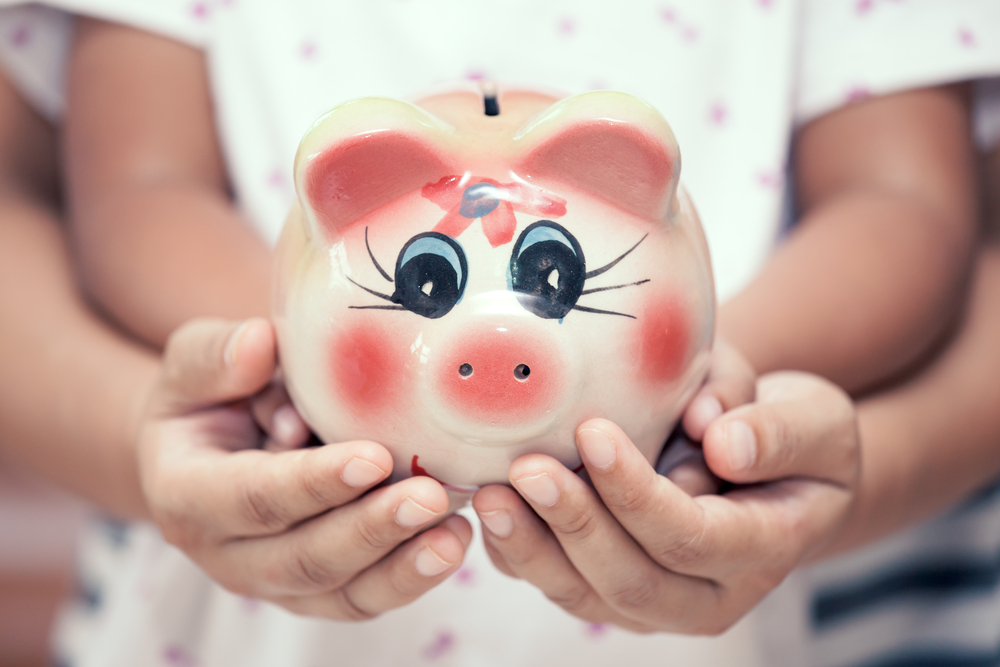Physical Science worksheets activities for Ages 4-9
6 filtered results
-
From - To
Explore engaging Physical Science worksheets and activities designed for children aged 4-9 at Kids Academy! Our resources introduce young learners to core science concepts through fun, age-appropriate exercises. These activities encourage curiosity about the world, covering essential topics like matter, energy, and forces. Each worksheet promotes critical thinking and hands-on learning, making science exciting and interactive. Ideal for both classroom and home use, our printable worksheets help reinforce knowledge while fostering a love for learning. Join us in inspiring the next generation of scientists with our comprehensive and dynamic Physical Science resources tailored for early learners!
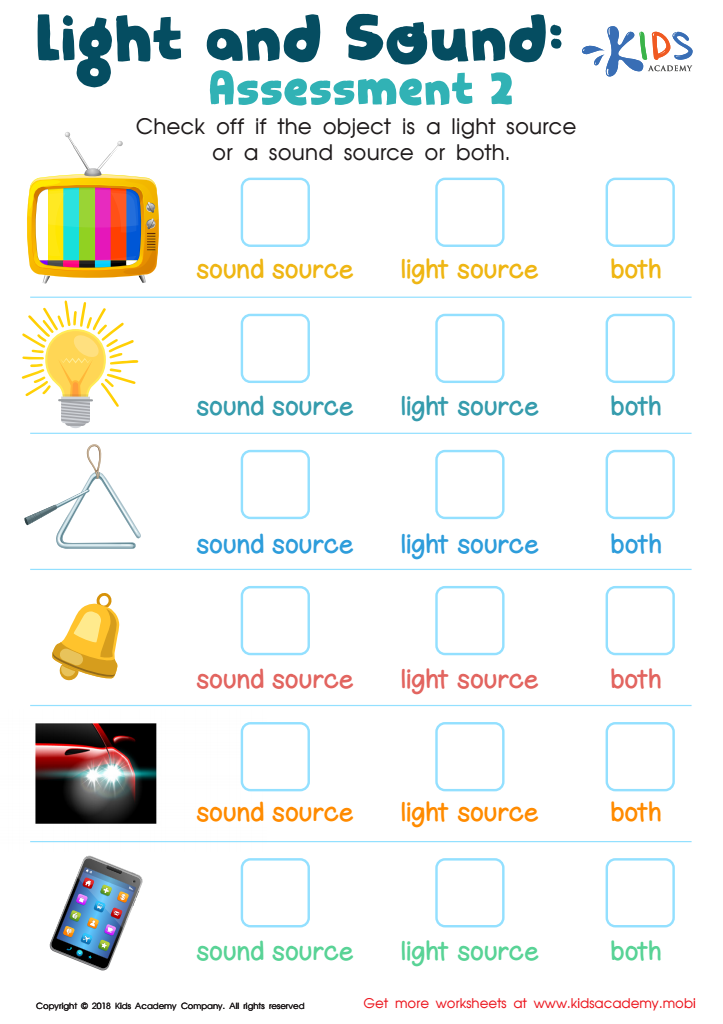

Light and Sound: Assessment 2 Worksheet
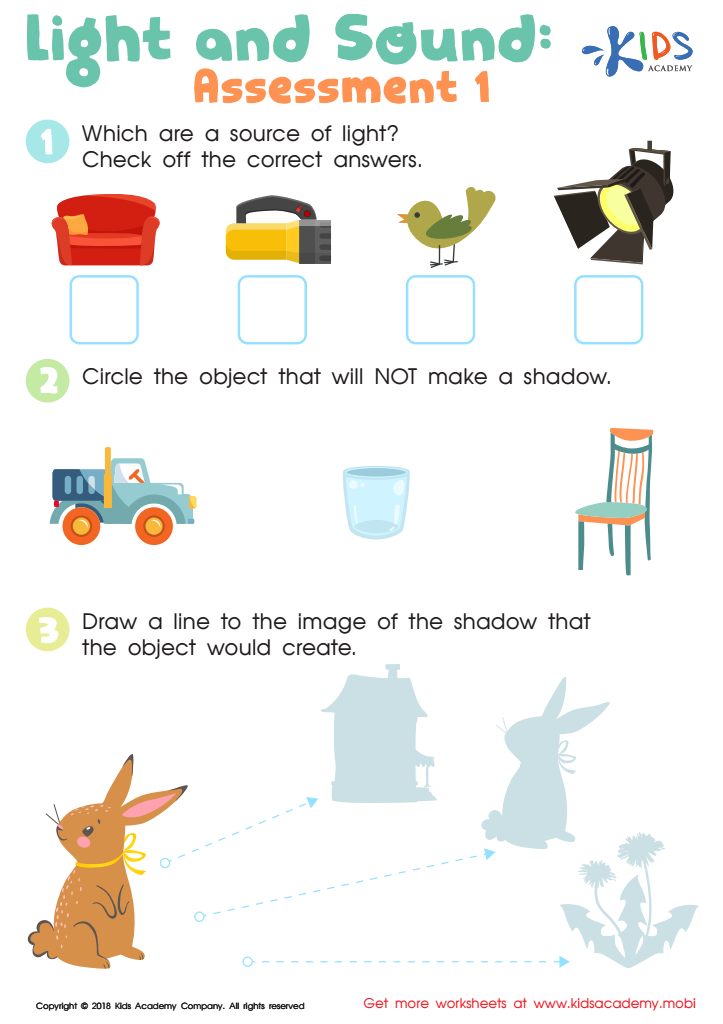

Light and Sound: Assessment 1 Worksheet
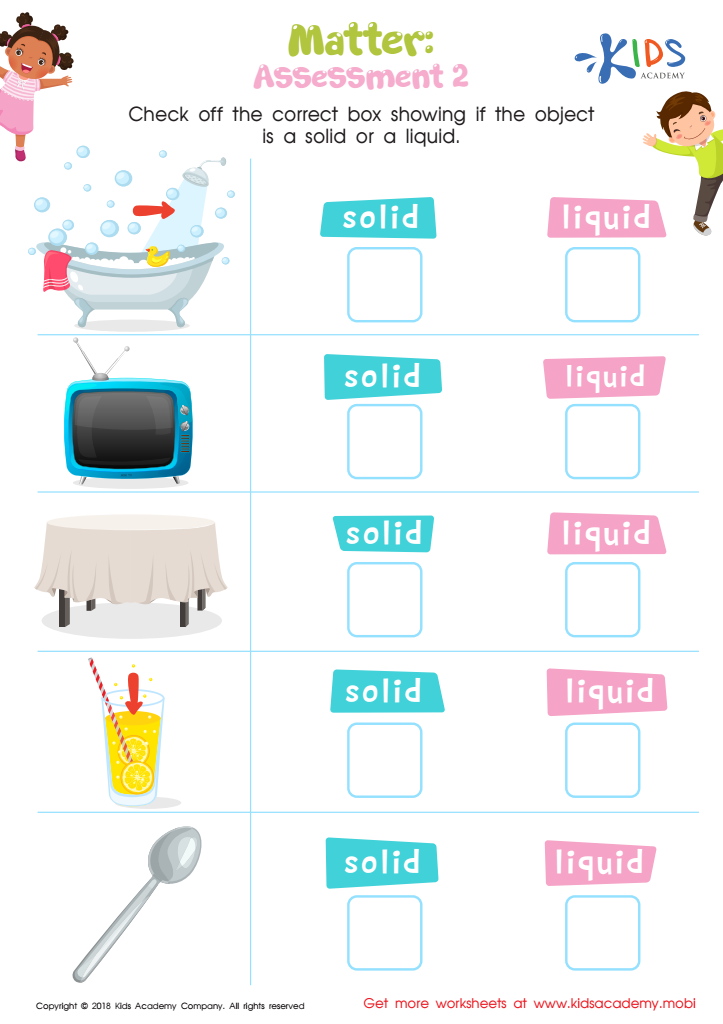

Matter: Assessment 2 Worksheet
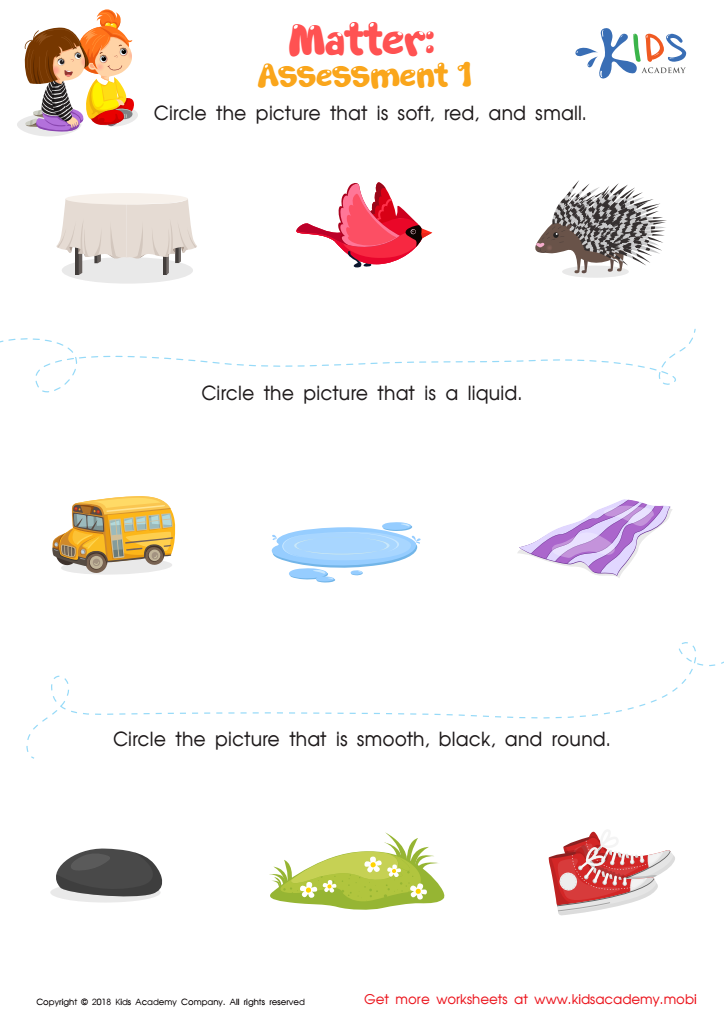

Matter: Assessment 1 Worksheet
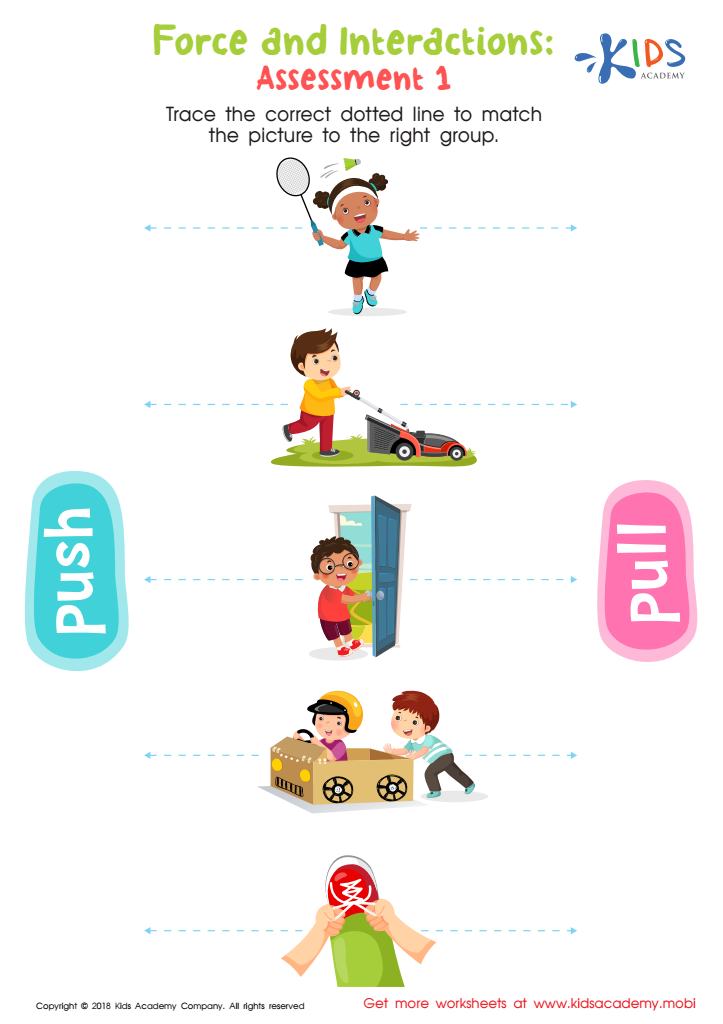

Force and Interactions: Assessment 2 Worksheet
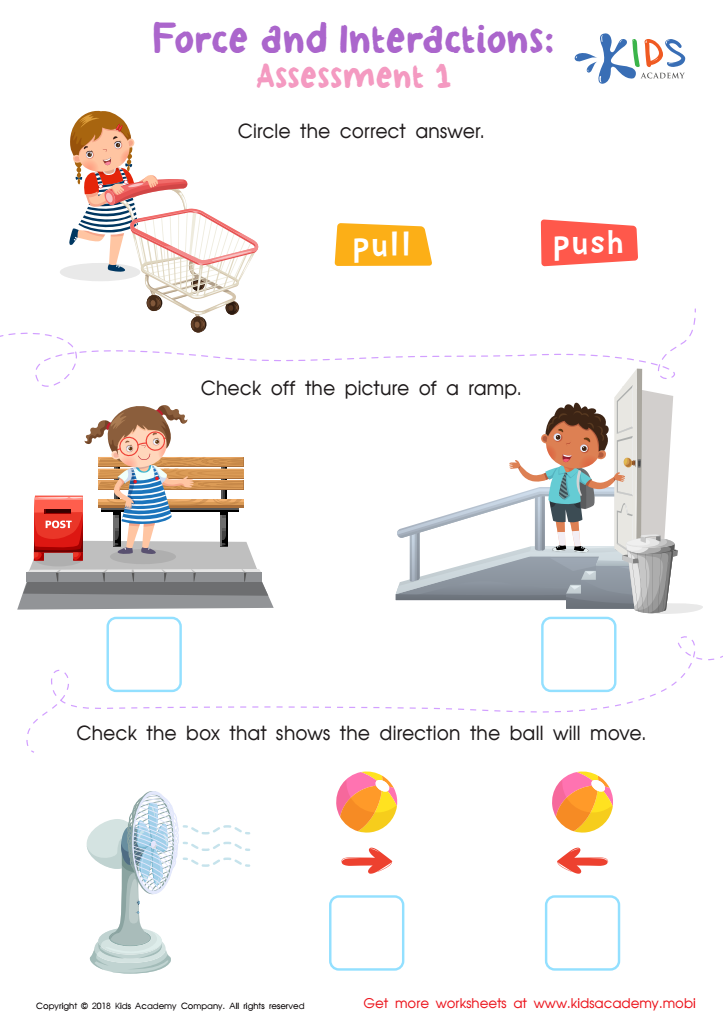

Force and Interactions: Assessment 1 Worksheet
Physical science activities for children aged 4-9 are vital for multiple reasons. First, this stage of development is crucial for fostering curiosity and a love for learning. Engaging children in hands-on physical science experiences helps them explore natural phenomena, encouraging questions about the world around them.
These activities contribute significantly to cognitive development. By participating in experiments and observing outcomes, children learn critical thinking and problem-solving skills. Through simple concepts of matter, energy, force, and motion, they build foundational knowledge essential for future academic success in sciences and other disciplines.
Moreover, physical science activities promote fine motor skills and coordination as children manipulate materials and tools. Collaborating with peers and adults during these activities enhances communication and teamwork abilities, essential social skills for their growth.
Importantly, physical science fosters creativity and imagination, allowing children to express themselves while engaging in exploration. When parents and teachers support these activities, they actively contribute to a child's holistic development. This foundation is not only critical for academic achievement but also empowers children to become informed, curious, and innovative thinkers in an increasingly science-driven world. Therefore, investing time in physical science activities is an investment in a child’s future.
 Assign to My Students
Assign to My Students






